Saffron milk caps, (formerly known as Lactarius deliciosus) are a crunchy, edible mushroom that have been enjoyed for millennia. Milk caps were one of the first mushrooms to be used in cooking. They were featured in a fresco from the Roman ruins of Herculaneum.
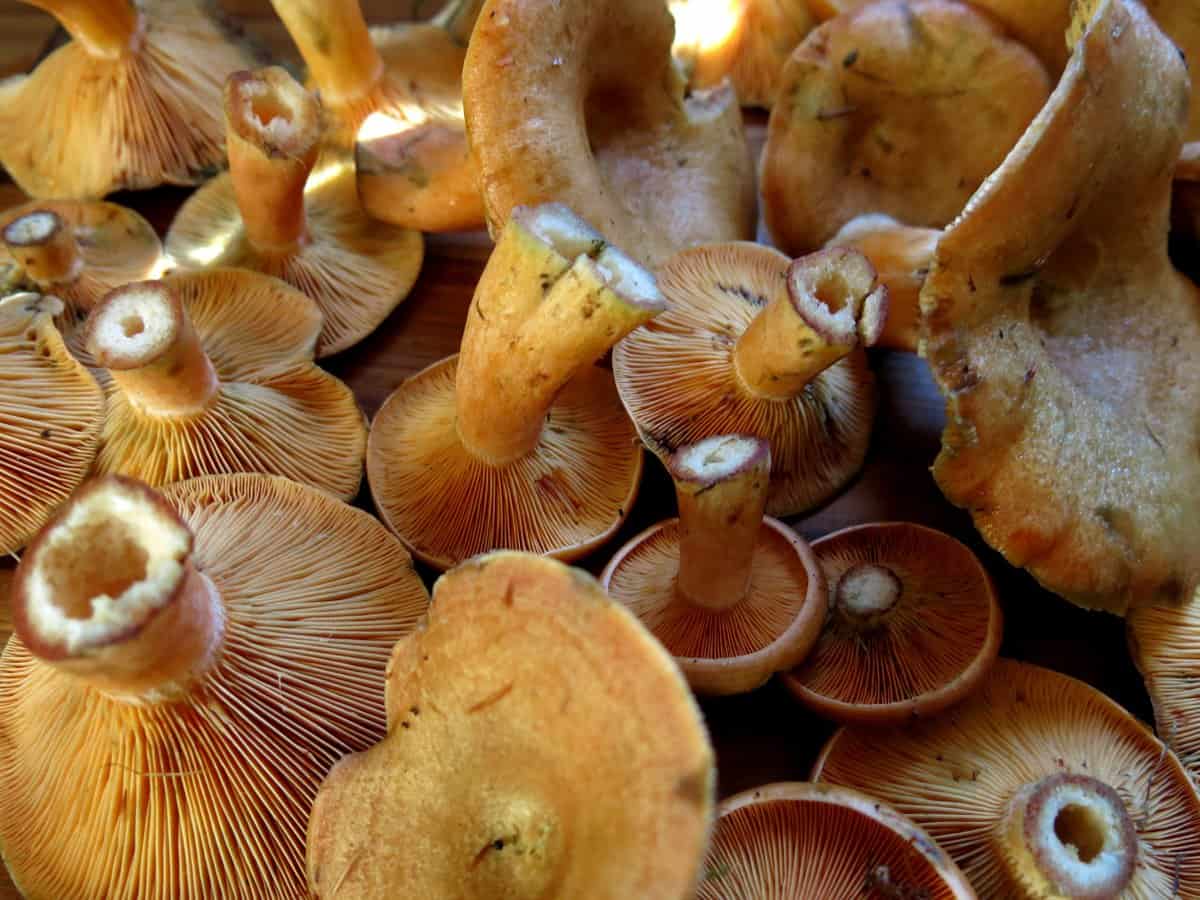
The saffron milk cap is essentially the national mushroom of Spain and the Iberian peninsula. There it's known as the rovellon, or niscalo. Doing an internet search for rovellones will turn up lot of fun information and saffron milk cap recipes.
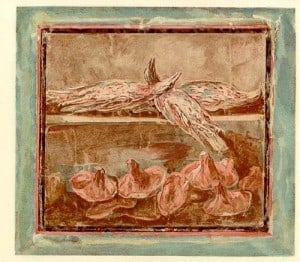
I searched every year and could only come up with one or two, here and there. Finally in the fall of 2013 I hit a great spot in a white pine forest at just the right time. They are great mushrooms, and have a nice crunchy texture, if you can get to them before the bugs!
Habitat
I find them fruiting under Eastern White Pine in Minnesota around August through October. The key to finding them is waiting for the rain during their season.
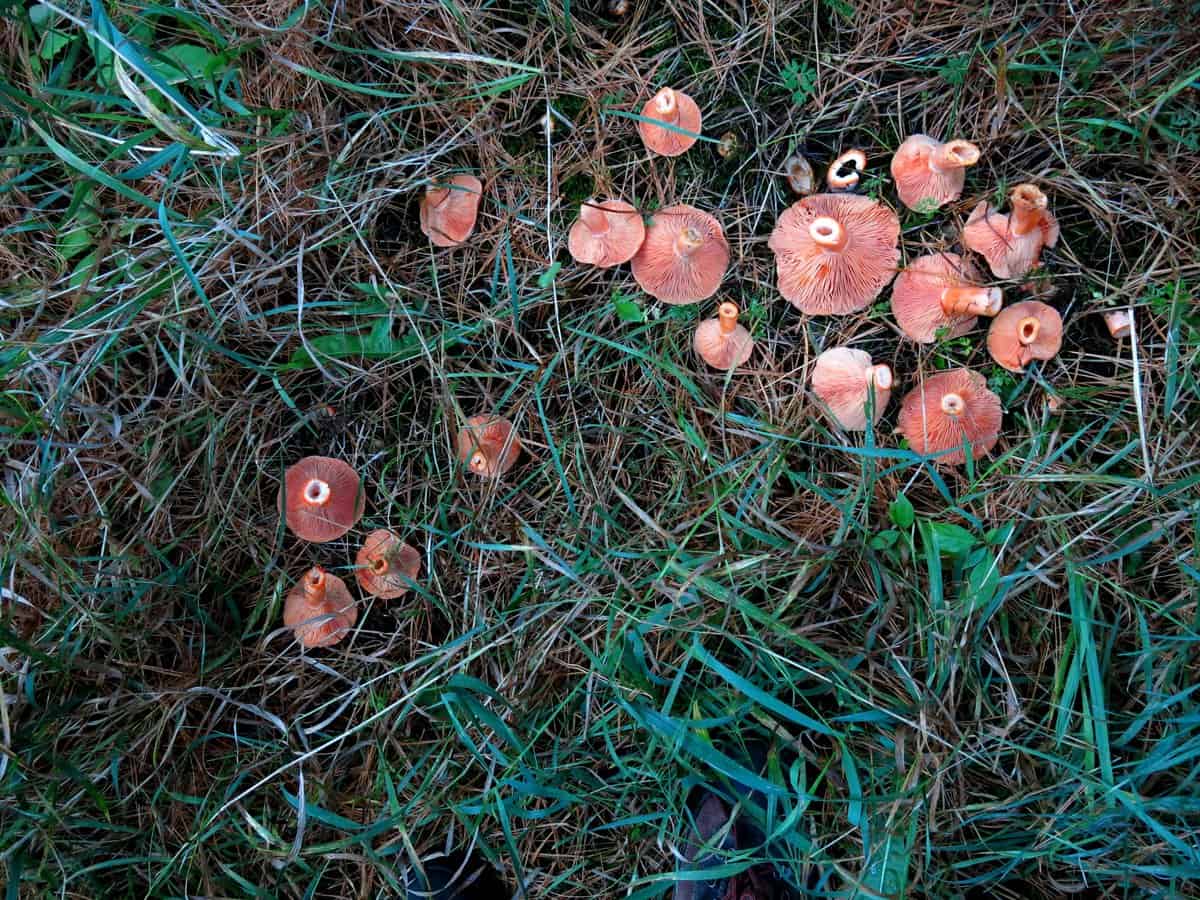
To me it seems like saffron milk caps need lots of rain to come out in force.
These often grow buried deep under pine needles, just remember where you see one, more are close by.
Identification
- Bright orange color that stains bright orange when cut
- When bruised, the color fades to green.
- Are found growing with coniferous trees only.
- When cut, the mushrooms will drip an orange latex, or juice.
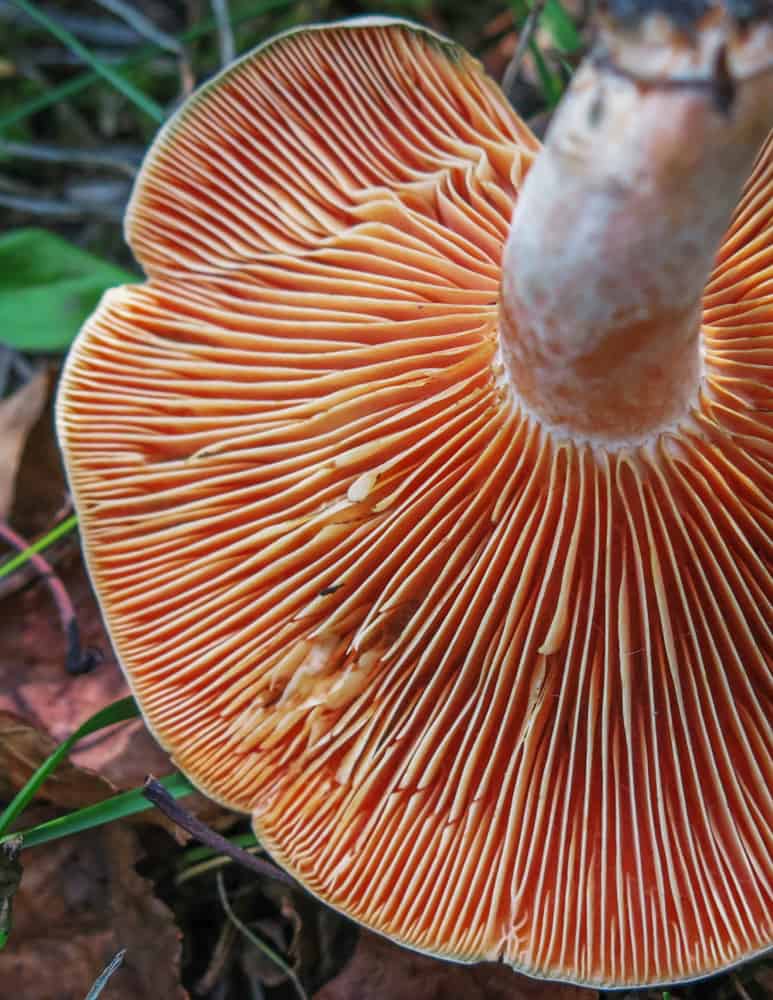
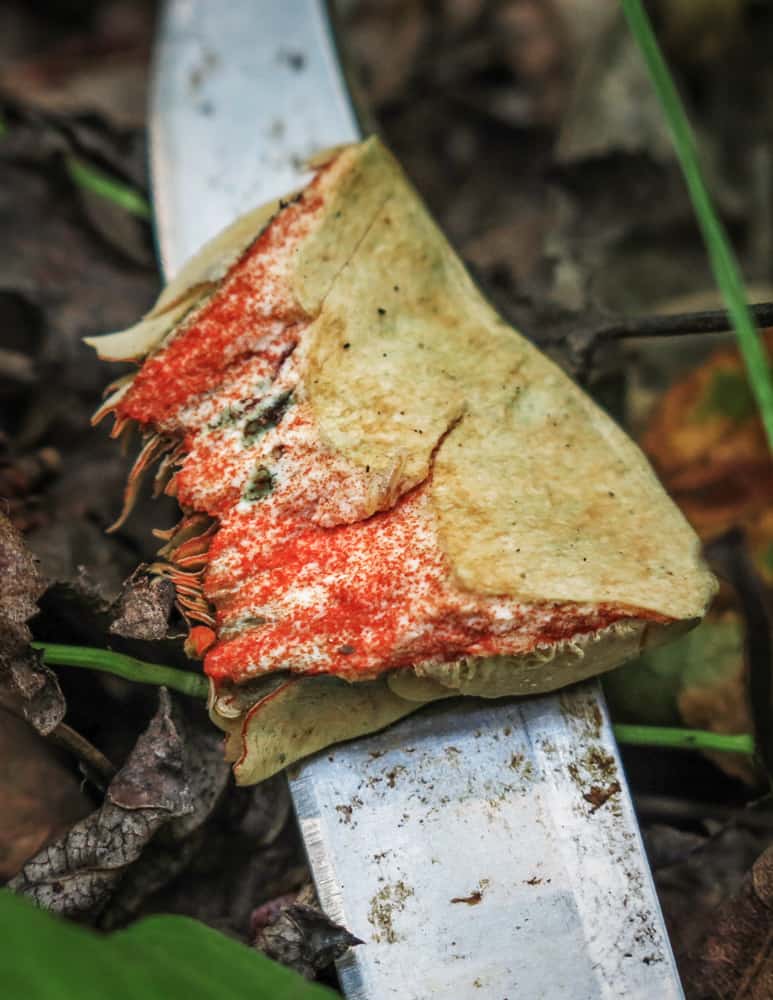
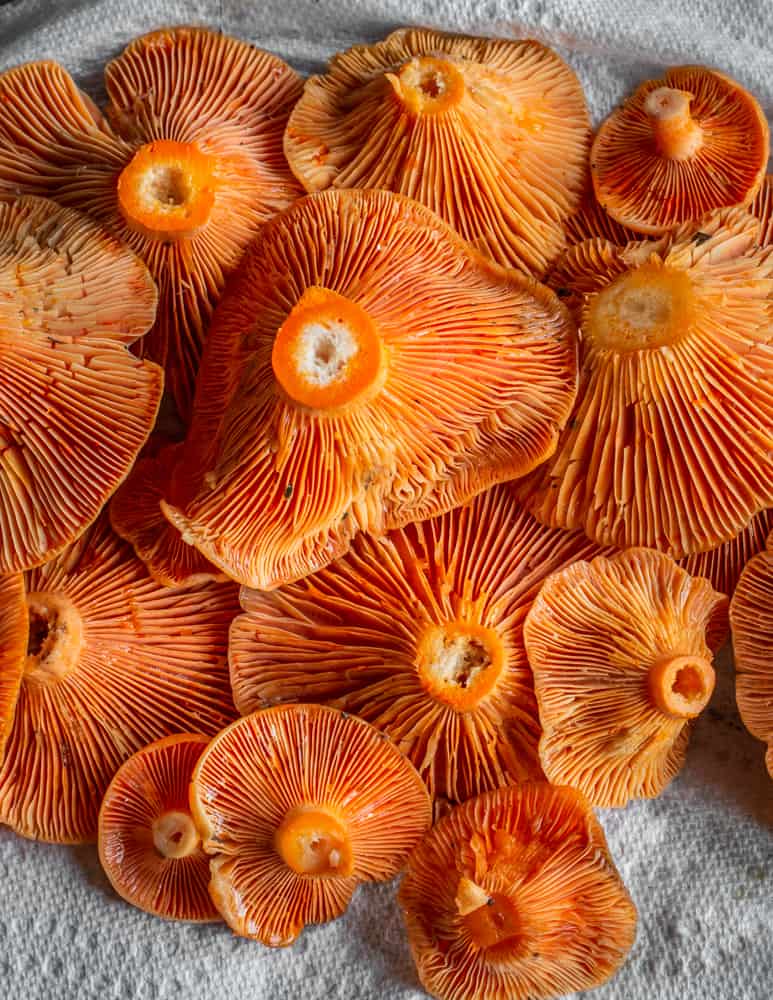
Species
Originally, saffron milk caps were labeled as L. deliciosus. Recent studies confirmed that North American mushrooms are distinct from European ones.
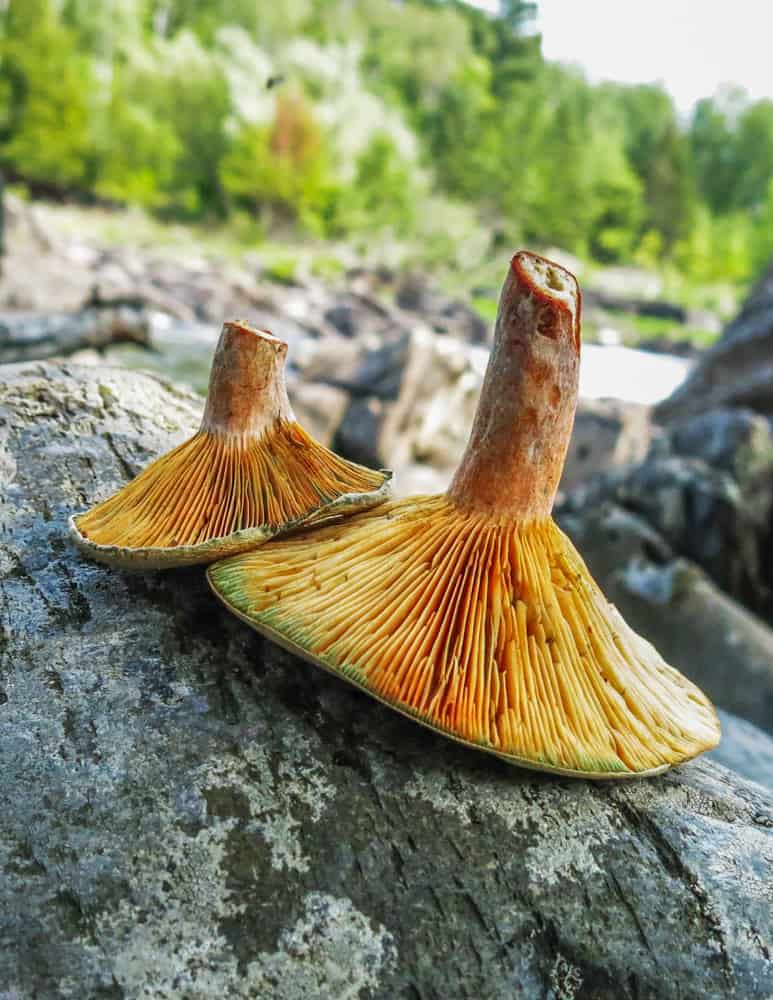
Basically, this means that there's a group of mushrooms (called the deliciosi, or deliciousus group) that will all cook relatively similar. I've eaten 2 or 3 different types, my favorite being Lactarius thyinos, a smaller variety that loves to grow with Norway spruce in Northern Minnesota in autumn. All true saffron milk caps are good to eat.
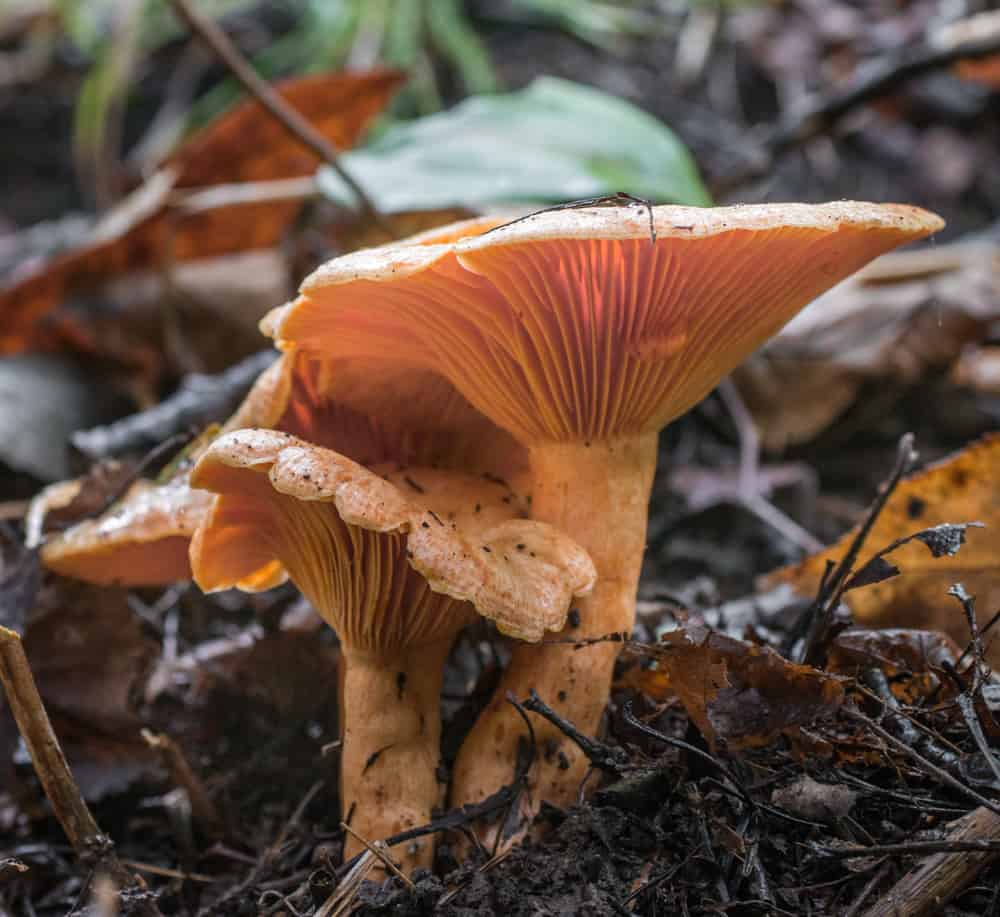
There's other species too, including bleeding milkcaps (Lactarius sanguifluus-Europe only). Lactarius salmoneus (North America) and probably others.
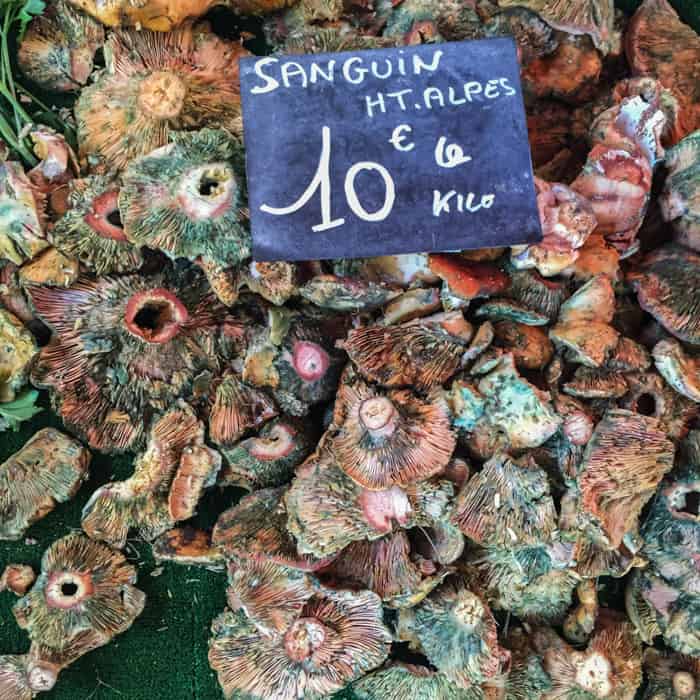
Look a Likes
Lactarius deterrimus are the most well known imposter. They will grow in the same areas and have a more grey colored cap and gills that are less bright orange.
They finished with a slightly bitter note when I ate them. They're still in the deliciosus group, and perfectly fine to eat-they're just not as good.
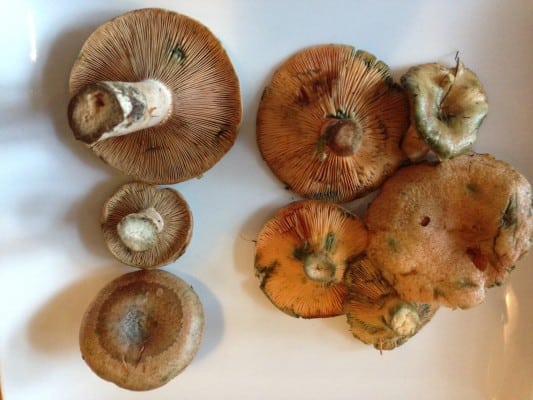
Jack O'Lanterns
Jack o'lantern mushrooms or Omphalotus species are another look alike, and this one will make you sick.
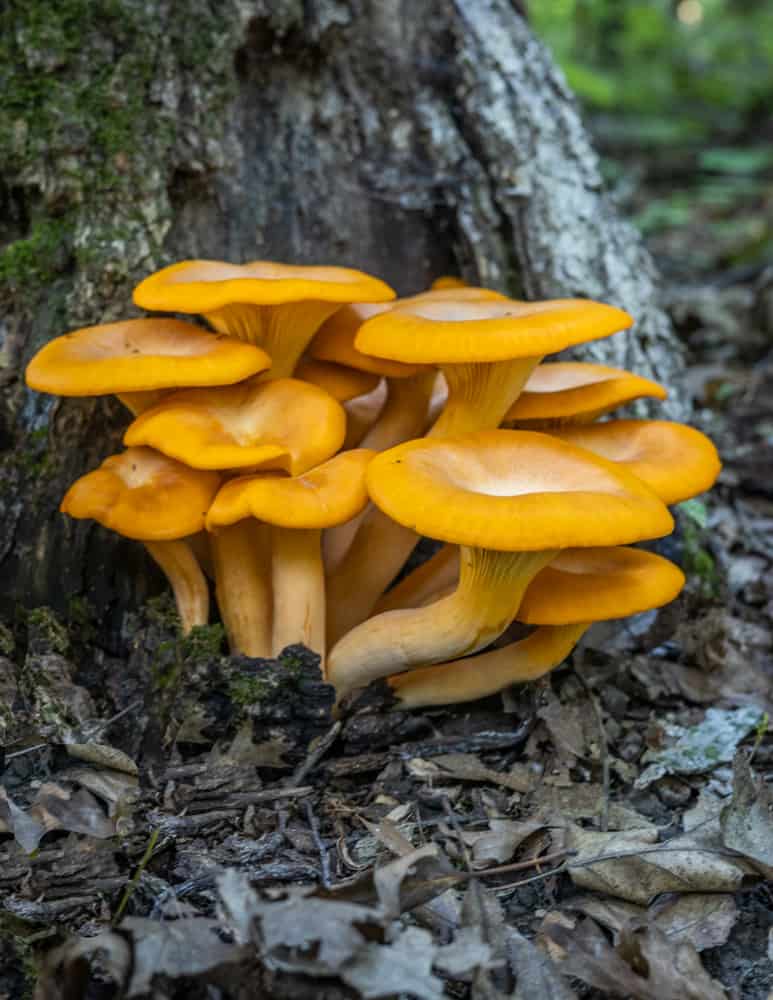
Like delicious milk caps, omphalotus are bright orange. Fortunately it's easy to separate from others. Here's a few identification tips.
- Jack O'Lanterns often grow clustered and are very large.
- Milk caps may have a tacky or sticky cap, where Jack O'Lanterns don't.
- Milk caps will bleed a thick liquid called latex when cut.
- Jack O'lanterns are parasitic, and grow on hardwood trees like an infection. Milk cap mushrooms grow symbiotically with specific coniferous trees.
Cooking
Like the name implies, they're delicious. You can treat saffron milk caps like any other mushroom, but they do have a texture that's been called "granular". I think the texture is fine, especially if they're cooked golden brown.
Since they grow with conifers, cleaning is usually easy. Most of the time, all you need to do is brush off the leaves and needles. If they're dirty I'll wash each one quickly by swishing in water, letting them rest on paper towels in the fridge until needed.
One of the best traditional ways to enjoy these is niscalos a la plancha: griddled, sprinkled with garlic, parsley and olive oil, similar to French wild mushrooms with garlic and parsley.
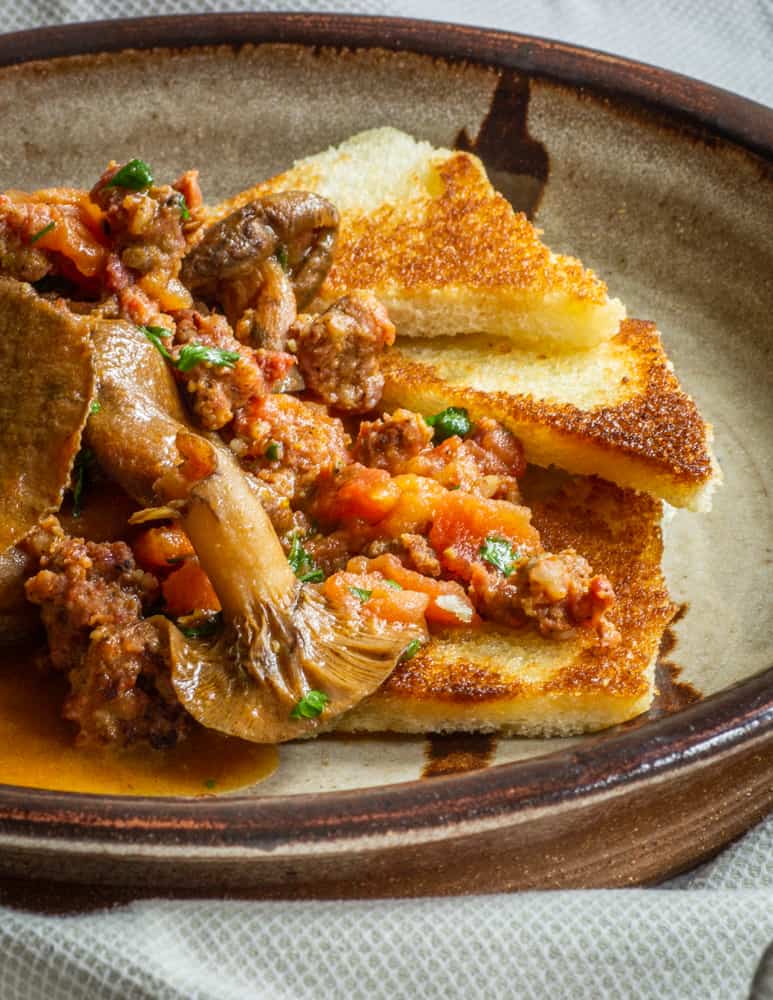
Preservation
These make good mushroom pickles and retain a bit of their crunch. They can also be stewed and frozen, but pickling or drying is my favorite method of preservation. When dried, they make a mushroom stock that tastes a bit like chicken to me.
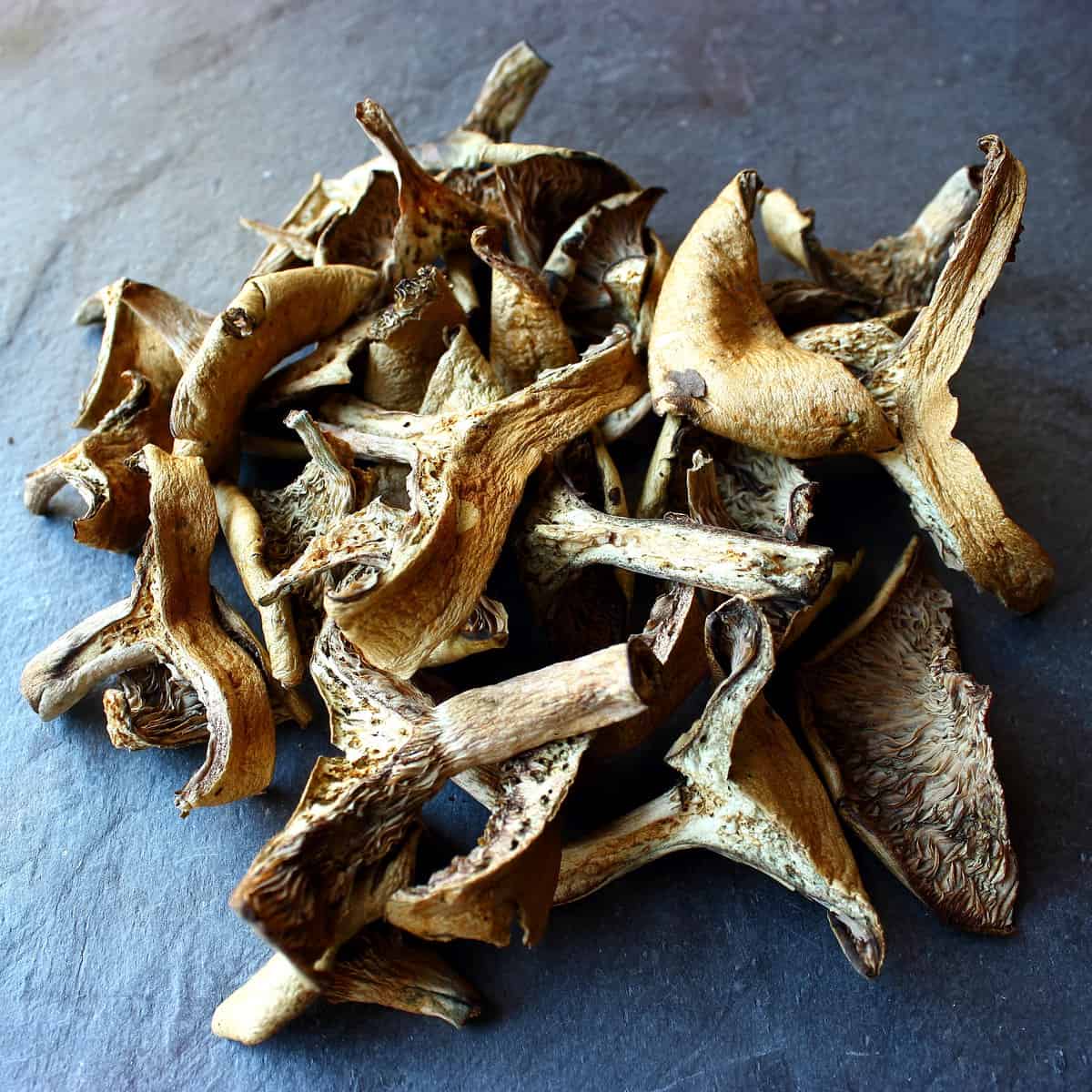
Fermentation
Saffron milk caps and other Lactarius are unique in that they're one of the few wild mushrooms that have a tradition of fermentation, with all of the recipes I've seen come from Eastern Europe and Russia.
To ferment, the mushrooms are typically blanched or steamed then mixed with salt brine and put into a mason jar, but I've seen recipes that call for packing raw mushrooms with salt too. It's important to know that if the mushrooms aren't briefly cooked first, they can discolor if exposed to air.
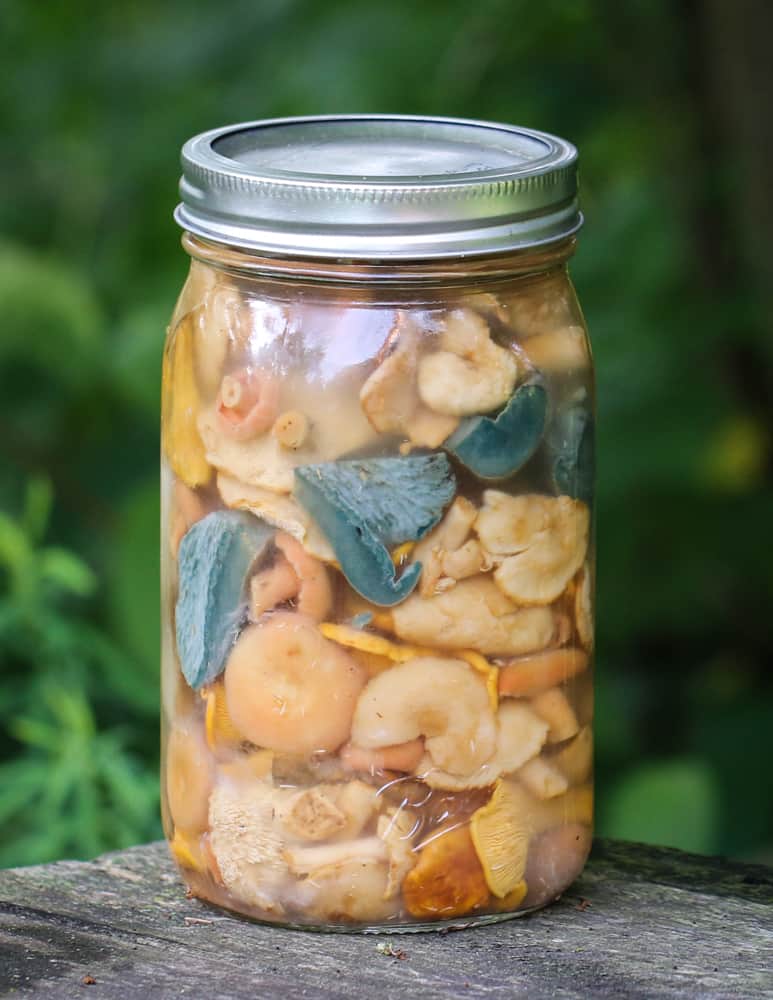
If the mushrooms are pickled, they can be a little slippery when removed, you can fix that by rinsing them off before eating. You can also preserve them in brine, which is traditional in Europe.
Saffron Milk Cap Recipes
More
35 Essential Wild Mushrooms Every Forager Should Know


Mandy-Jane
How do you dry/dehydrate Saffron Milk Cup mushrooms?
Alan Bergo
Slice and dry at 120 F in a dehydrator until brittle.
manel
Im a catalan(spanish) living in Melbourne and just went to pick some the other day. Definitely the time of the year as when i i found some pines trees 1 hour drive from melbourne they were everywhere. Will try the catalan recipe
Alan Bergo
Enjoy. I can't wait to pick these mushrooms this year.
Jacq
Has anyone tried drying them?
Alan Bergo
I mention it in the cooking section of this post. You can dry them, and I like them. They're not as tough as chanterelles after drying and rehydrating, but I do usually chop them or cut into thing slices. They, and all the other Lactarius I've tried so far make a stock that tastes a bit like light chicken broth.
Jacqueline Bennett
Thanks I visited this site last year too. A friend told me this was a good site yesterday and I found my question. My husband thinks he picked about 10 kilos, drying on the dinner table as I write!
Alan Bergo
Excellent. It's been years since I picked that many. We have to have a reasonably warm fall with lots of rain here.
andrasz
On the comparison photo those of the right look suspiciously Lactarius semisanguifluus rather than L. deliciosus. The two are very much alike, but the sap of the former turns wine-red after a few minutes. The sap of L. deliciosus also darkens, but not so fast, and not to such a ruby red. Also the caps of the former have a greenish hue, sometimes distinctly green, even on young ones, whereas L. deliciosus is more orangey-brownish. The gills of both turn green on damage, but those of the former much more intensely. For culinary purposes L. semisanguifluus is equivalent to L. sanguifluus, practically on par with L. deliciosus, so my comment is purely academic 🙂
Alan Bergo
Hey thanks so much for pointing that out. I wasn’t aware of those. That’s entirely possible, I’ll look through my archive images and see if I can’t update that.